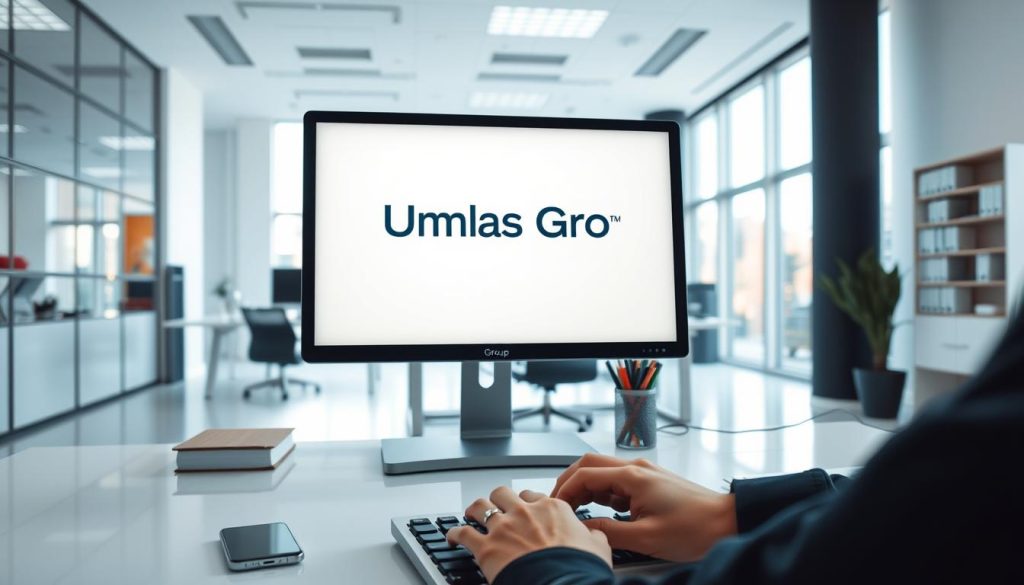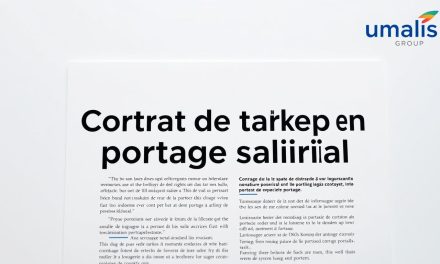Remember the first time you realized your career success depends on more than just skills? I do. Early in my consulting journey, I watched talented peers lose clients to competitors with stronger online visibility. Their websites weren’t better – they simply understood the game. That’s when I discovered how metrics like Domain Authority® shape professional futures.
Developed by Moz, this 1-100 score predicts your site’s search ranking potential compared to others. While not a direct Google ranking factor, it’s like a career compass for independent professionals. Your score reflects how search engines view your digital credibility – crucial when clients research you online.
Why care about this number? Because it measures what matters: your site’s ability to compete. A higher score means better visibility for competitive keywords. Whether you’re in finance needing a 60+ DA or a local business thriving at 30, this metric reveals where you stand – and where to improve.
We’ll show how to use DA as a strategic tool. Not just for rankings, but to build lasting credibility that attracts ideal clients. You’ll learn to interpret this score alongside other SEO health indicators, creating actionable strategies that grow with your career.
Table of Contents
Key Takeaways
- Domain Authority predicts website competitiveness, not direct search rankings
- Scores range 1-100, with industry-specific benchmarks for success
- Higher DA correlates with better visibility for competitive keywords
- Essential for professionals building online credibility and client trust
- Combines with other SEO metrics for complete digital strategy analysis
- New sites start at DA 1, growing through strategic optimization
What is Domain Authority?
Imagine two websites competing for the same client – one appears on page one of Google, the other buried on page five. The difference often lies in a hidden number shaping online success. This predictive score acts like a digital reputation meter, revealing how search engines view your professional credibility.
Definition and Purpose
Developed by Moz, this metric evaluates your entire website’s potential to rank compared to competitors. Unlike traffic counts or social shares, it focuses on link quality – the endorsements other sites give yours through backlinks. Think of it as your site’s résumé: stronger references (links) mean better career prospects (rankings).
The score ranges from 1 to 100, but its real power lies in relativity. A 40 might be stellar for niche consultants but low for national firms. As one SEO expert notes: « It’s not about hitting 100 – it’s about outpacing your specific rivals. »
How it Compares to Other Metrics
While Page Authority measures individual pages, this metric assesses your whole digital presence. Ahrefs’ Domain Rating uses similar logic but different calculations – like comparing French and Spanish wine ratings. Both matter, but professionals often prefer Moz’s system for its strategic backlinking approach.
Key distinctions:
- Predictive vs Reactive: Shows future potential rather than past performance
- Holistic Analysis: Considers 40+ factors beyond basic link counts
- Industry Context: Benchmarks change based on your professional field
Importance of Domain Authority for SEO

What separates top-ranked professionals from those stuck on page two? Often, it’s their grasp of competitive positioning. Your website’s strength in search results isn’t just about keywords – it’s about how engines perceive your digital reputation.
Benchmarking Your Website
Think of DA as your site’s credit score. It helps you measure progress against others in your field. A financial advisor with DA 45 might dominate local searches, while national firms need 60+ to compete. Moz founder Rand Fishkin puts it bluntly: « Ignoring this metric is like pricing services without knowing market rates. »
Effective benchmarking involves three steps:
- Compare your score with top 5 competitors
- Track monthly fluctuations using free tools
- Set incremental goals (aim for 5-10 point jumps)
Impact on Organic Traffic and Rankings
Sites with higher DA typically see 37% more organic traffic according to Backlinko’s research. Why? Search engines trust them to deliver quality content. This trust translates to better visibility for competitive terms – crucial when clients search for specialized services.
Consider these real-world impacts:
- DA 30-40: Dominates long-tail keywords in niche markets
- DA 50+: Competes for broader industry terms
- DA 70+: Ranks for high-value commercial keywords
While DA doesn’t guarantee top placements, it reveals where to focus your SEO strategy. A rising score often precedes traffic growth, making it an essential progress indicator for professionals building online influence.
How Domain Authority is Calculated
Think of your website’s search ranking potential like a secret recipe – Moz’s algorithm blends over 40 ingredients to determine your score. This machine-learning model doesn’t just count backlinks; it evaluates how each piece connects to your professional credibility.
Role of Backlink Profiles
Your backlink profile acts as the foundation of this calculation. Moz analyzes:
- Source diversity: Links from 100 unique domains beat 1,000 links from 5 sites
- Contextual relevance: Industry-specific sites boost your score more
- Trust signals: Metrics like MozRank measure link authority
SEO specialist Marie Dubois explains: « One high-quality link from .edu or .gov site can outweigh dozens of generic directory listings. »
Evaluating Linking Root Domains and Quality
The algorithm prioritizes root domains – websites linking to yours for the first time. Three key evaluation layers:
- Spam detection: Filters out toxic links harming your reputation
- Content alignment: Links from related niches carry more weight
- Growth patterns: Sudden link spikes trigger quality checks
MozTrust scores reveal how closely a linking domain aligns with trusted resources. This evolving system updates monthly, mirroring Google’s ranking factors to keep your strategy current.
Evaluating a Good Domain Authority Score
What makes a strong online reputation in your field? While many professionals fixate on reaching arbitrary numbers, true success lies in understanding relative performance. Your website’s standing isn’t about hitting magic numbers—it’s about outperforming your specific rivals.
Industry Standards and Competitor Comparison
New websites begin with a score of 1, gradually climbing as they earn quality backlinks. A financial advisor might dominate local searches at 35, while tech startups often need 50+ to compete nationally. SEO strategist Marie Dubois notes: « Comparing your progress to industry leaders creates smarter goals than chasing generic benchmarks. »
Use this framework to assess your position:
| Score Range | Website Stage | Typical Impact |
|---|---|---|
| 1-25 | Emerging Presence | Wins long-tail niche queries |
| 26-40 | Established Player | Competes for mid-range keywords |
| 41-60 | Industry Authority | Ranks for commercial terms |
Three steps for effective competitor analysis:
- Identify top 5 rivals using SEO tools like Moz or Ahrefs
- Track monthly fluctuations in their scores
- Analyze their backlink sources for partnership opportunities
Focus on consistent growth rather than absolute values. A 10-point lead over competitors often translates to 2-3x more click-throughs for priority keywords. This strategic approach helps allocate resources where they’ll make the biggest impact.
Practical Strategies to Increase Domain Authority

Building lasting digital influence requires more than just great ideas – it demands intentional actions that strengthen your site’s credibility. Two pillars drive sustainable growth: cultivating authoritative connections and refining your content ecosystem.
Earning High-Quality Backlinks
Quality backlinks act as professional endorsements for your website. Focus on creating resources that industry leaders want to reference:
- Publish original research with actionable insights
- Develop comprehensive how-to guides solving common client challenges
- Curate data-driven industry reports with shareable visuals
Effective link-building resembles networking at a conference – target relevant, authoritative sites in your field. A strategic link-building guide reveals how to identify partnership opportunities that boost credibility.
| Effective Tactics | Ineffective Approaches |
|---|---|
| Guest posts for niche publications | Mass directory submissions |
| Collaborative industry studies | Purchased link packages |
| Resource page outreach | Comment spam on blogs |
Optimizing Content and User Experience
Search engines reward sites that satisfy both algorithms and human visitors. Balance keyword optimization with:
- Mobile-first design ensuring seamless navigation
- Page load speeds under 2 seconds
- Content clusters addressing related search queries
Upgrade existing articles using this framework:
| Optimization Step | Impact |
|---|---|
| Add video summaries | +25% engagement time |
| Implement FAQ schema | Higher featured snippet potential |
| Simplify site structure | Better crawl efficiency |
Regularly audit your link profile using tools like Moz’s Link Explorer. Remove toxic connections while strengthening relationships with trusted industry partners. This dual focus creates lasting momentum in search rankings.
Implementing On-Page SEO for Enhanced Authority

Your website’s search performance works like a well-built house – without strong structural foundations, even the best content collapses. On-page optimization forms this critical framework, aligning technical precision with human-centric design.
Content Architecture That Converts
Strategic keyword placement begins with understanding user intent. For professionals, this means crafting solution-focused headings that answer client questions while signaling relevance to search engines. Digital strategist Laura Chen emphasizes: « Your H2s should read like conversation starters, not robotic keyword dumps. »
Three pillars of effective content structure:
- Hierarchical headings guiding readers through key points
- Natural keyword integration in first paragraphs
- Clear content clusters addressing related queries
| Optimized Page Elements | Impact on Performance |
|---|---|
| Compelling meta titles under 60 characters | +42% click-through rate (Moz research) |
| Readability scores at 8th-grade level | 28% longer session duration |
| Mobile-responsive formatting | 15% ranking boost in mobile searches |
Meta descriptions deserve special attention – these 150-character summaries determine whether professionals click through. Blend primary keywords with action verbs: « Discover proven strategies… » outperforms generic « Learn about… » phrasing.
Balance technical rigor with authentic value through SEO-optimized content creation. This approach transforms dry information into engaging resources that:
- Address specific client pain points
- Establish thought leadership
- Encourage natural backlink acquisition
Regular audits using tools like Screaming Frog ensure consistency across all pages. Remember: sustainable ranking improvements come from harmonizing technical excellence with genuine audience understanding.
Enhancing Your Backlink Profile and Link Building
Building professional relationships online mirrors strategic networking at industry events – each quality connection strengthens your digital reputation. Your backlink profile serves as a credibility network, where trusted websites vouch for your expertise through genuine recommendations.
Strategic Content Partnerships
Guest blogging works best when offering unique insights to relevant audiences. Focus on platforms where your ideal clients seek information. A well-placed article on industry-leading sites can generate more value than dozens of random links. « Target publications your clients actually read, not just high-authority domains, » advises SEO consultant Mark Tabor.
Protecting Your Digital Reputation
Regular backlink audits prevent toxic connections from undermining your progress. Use Google Search Console to identify spammy links resembling unwanted business associations. Disavow tools help remove harmful connections while preserving valuable relationships.
Media Engagement Tactics
Digital PR transforms your expertise into link opportunities. Share proprietary data with journalists or comment on industry trends. A single mention in reputable media often sparks multiple organic backlinks from related publications.
| Effective Strategy | Key Benefit |
|---|---|
| Expert roundup participation | Builds relationships + earns contextual links |
| Data-driven press releases | Attracts media coverage + citations |
| Broken link building | Replaces dead links with your content |
Balance proactive outreach with organic link attraction. Create resources so valuable that other professionals naturally reference them – the digital equivalent of becoming a go-to expert in your field.
Using Domain Authority as a Key SEO Metric
Navigating SEO without tracking key metrics is like sailing without a compass—directionless and risky. Domain Authority serves as your digital North Star, revealing how search engines perceive your expertise compared to competitors. When integrated thoughtfully, this metric becomes a strategic ally rather than just a number.
Making Metrics Work for You
Effective SEO strategy balances quantitative insights with real-world results. Track monthly score changes using free tools like Moz Link Explorer. Look for patterns—does content updates correlate with improvements? How do industry shifts affect your standing?
Combine Domain Authority with other SEO performance indicators for full visibility. Analyze which high-performing pages attract quality backlinks. Monitor how technical improvements impact your score over 90-day cycles.
Three actionable integration steps:
- Set quarterly benchmarks against top competitors
- Align content updates with link-building opportunities
- Use score trends to justify SEO budget allocations
Remember: This metric shines when guiding strategic decisions, not defining self-worth. Treat it as a growth compass—pointing where to refine efforts while celebrating measurable progress. Your true authority lies in consistently delivering value that both algorithms and humans reward.
FAQ
How does Domain Authority differ from Page Authority?
Domain Authority (DA) measures a website’s overall credibility across search engines, while Page Authority (PA) focuses on individual pages. Both metrics, developed by Moz, use a 1-100 scale. DA reflects long-term SEO health, whereas PA helps assess specific content performance.
Why should professionals prioritize improving their website’s DA score?
A higher DA strengthens your site’s potential to rank in search results, driving organic traffic and visibility. It also builds trust with clients and competitors, positioning your brand as an industry leader. Regular benchmarking ensures you stay ahead in competitive markets.
What role do linking root domains play in DA calculations?
Linking root domains—unique websites linking to yours—are critical. Search engines like Google view them as endorsements of your content’s value. High-quality links from reputable sources (e.g., Forbes or niche blogs) boost DA faster than low-authority backlinks.
Is a DA score of 40 considered strong for a local business?
It depends on your industry. Compare your score to competitors using tools like Ahrefs or SEMrush. A local bakery might thrive with DA 30-40, while a tech startup may need DA 50+ to compete. Focus on outperforming direct rivals rather than universal benchmarks.
How can guest blogging improve my backlink profile?
Contributing expert content to reputable sites earns contextual backlinks, signaling trust to search engines. For example, a cybersecurity consultant writing for TechCrunch gains exposure and a high-value link. Always prioritize relevance over quantity in outreach campaigns.
Can outdated content harm my site’s authority?
Yes. Thin or obsolete content drags down user experience and SEO performance. Audit your pages quarterly. Update statistics, refresh meta tags, and repurpose underperforming posts into guides or videos. Google rewards sites that prioritize current, actionable insights.
What’s the fastest way to identify toxic backlinks?
Use Google Search Console or Moz’s Link Explorer to review your backlink profile. Look for spammy domains, irrelevant anchor text, or suspicious linking patterns. Disavow harmful links promptly to protect your site’s reputation and rankings.
How does digital PR support DA growth?
Strategic PR campaigns—like data-driven studies or expert interviews—earn media coverage and editorial links. For instance, a freelance HR consultant cited in SHRM’s article gains a authoritative backlink and brand credibility, both boosting DA over time.





